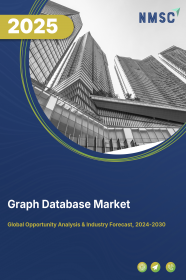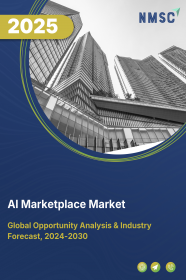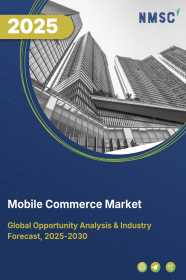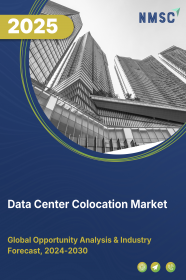
Graph Database Market by Type (Resource Description Framework (RDF) and Labeled Property Graph (LPG)), by Component (Software and Service), by Deployment Mode (Cloud and On-Premise), by Organization Size (Large Enterprises and SMEs), by Application (Fraud Detection and Prevention, and Recommendation Engine and Others)- Global Opportunity Analysis and Industry Forecast 2024-2030
US Tariff Impact on Graph Database Market
Trump Tariffs Are Reshaping Global Business
Graph Database Market Overview
The global Graph Database Market size was valued at USD 3.03 billion in 2023 and is predicted to reach USD 10.94 billion by 2030 with a CAGR of 20.12% from 2024-2030.
A graph database is a type of database that uses graph theory to store, map, and query relationships between data entities. In a graph database, data is represented as nodes (or vertices) that are connected by 34edges (or relationships) to other nodes, forming a network of interrelated data. Each node in a graph database represents an entity, such as a person, place, or thing, and the edges represent the relationships between those entities. These relationships can be complex and multi-faceted, and can have different types and properties associated with them.
Semantic databases are particularly useful for handling complex and connected data, such as social networks, recommendation engines, and knowledge graphs, where relationships between data entities are as important as the entities themselves. They offer fast query performance and are designed to scale horizontally across multiple machines, making them suitable for large-scale applications.
Market Dynamics and Trends
The increasing demand for Internet of Things (IoT) and connected devices is fuelling the growth of the graph database market. As the number of IoT devices continues to grow exponentially, so does the complexity of managing and analysing the vast amounts of interconnected data they generate. Graph databases excel in modelling and querying relationships between devices, sensors, and other IoT components, making them essential for handling the intricate network of data produced by IoT deployments.
By leveraging graph databases, organizations can efficiently store, analyze, and derive insights from IoT data, enabling them to optimize operations, improve decision-making, and unlock new opportunities for innovation in the IoT ecosystem. Also, the growing demand for cloud computing and the increasing pace of digitalization are driving the growth of the graph database market.
As businesses embrace cloud-based infrastructure and digital transformation initiatives, the volume and complexity of data generated and stored in the cloud continue to surge. Graph databases offer a flexible and scalable solution for managing and analyzing interconnected data structures, making them well-suited for modern cloud environments.
By leveraging graph databases, organizations can efficiently navigate and extract insights from complex relationships within their data, empowering them to make informed decisions, enhance operational efficiency, and drive innovation in the digital era.
However, the complexity of managing graph databases, coupled with the high costs associated with their implementation and maintenance are the factors restraining the growth of the market. On the other hand, the introduction knowledge graphs, graph neural networks, and hybrid database in graph database are expected to create ample growth opportunities for the market in the future.
Market Segmentation and Scope of Study
The global graph database market report is segmented on the basis of type, component, deployment mode, organization size, application, industry vertical and geography. On the basis of type the market is classified into resource description framework (RDF) and labeled property graph (LPG). On the basis of component, the market is segmented into software and service. Based on deployment mode the market is divided into cloud and on-premise. Based on organization size the market is categorized into large enterprises and SMEs. On the basis of application, the market is divided into fraud detection and prevention, and recommendation engine. On the basis of industry vertical, the market is divided into BFSI, retail and eCommerce, telecom and IT, healthcare, pharmaceuticals, and life sciences, government and public sector, manufacturing and automotive, media and entertainment, energy and utilities, travel and hospitality, transportation and logistics, and others. Geographical breakdown and analysis of each of the aforesaid classifications include regions comprising of North America, Europe, Asia-Pacific, and RoW.
Geographical Analysis
North America dominates the global graph database market at present and is expected to remain dominant in the market throughout the forecast period. This is attributed to the stringent regulatory requirements in sectors including finance and healthcare necessitate the use of advanced data management solutions such as graph databases for compliance and risk management purposes. In December 2021, the Federal Trade Commission (FTC) announced updates to the Safeguards Rule under the Gramm-Leach-Bliley Act (GLBA).
These updates underscore the significance of conducting comprehensive risk assessments to identify and mitigate potential data security threats, establishing robust incident response plans to effectively address data breaches and security incidents, and ensuring that third-party vendors handling financial data implement adequate security measures. Moreover, the presence of major market players such as Amazon web services and IBM Corporation that are adopting various strategies including product launches is significantly boosting the growth of the market in the region.
For instance, in October 2022, Amazon Web Services (AWS) launched Amazon Neptune Serverless, a new addition to its Amazon Neptune graph database service. This new serverless option will allow customers to run graph workloads on-demand and will automatically scale capacity up or down based on application demands.
This highlights AWS's continued investment in the market and its efforts to make it easier and more affordable for customers to use graph databases for their applications. On the other hand, Asia Pacific shows substantial growth in the market owing to the growing adoption of mobile phones in the Asia-Pacific region. As per the GSMA report, smartphone adoption is projected to reach 94% by 2030, marking an 18% increase from the figures recorded in 2022.
Additionally, nearly half of the population in the Asia Pacific region, accounting for 49%, is currently connected to the mobile internet. As more people across the region access the internet and interact with various mobile applications, there is a surge in the volume of interconnected data generated by these devices.
Graph databases excel in managing complex relationships between data points, making them essential for analyzing user behaviour, social networks, and other mobile-related data. Businesses and organizations in the region are increasingly leveraging graph databases to derive valuable insights from mobile usage patterns, personalize user experiences, and optimize mobile app performance.
Moreover, the increasing demand for Internet of Things (IoT) technology in the Asia-Pacific region is significantly fuelling the graph database market. With the widespread adoption of IoT devices across various industries such as manufacturing, agriculture, healthcare, and smart cities, there is a massive influx of interconnected data being generated.
According to a survey conducted by Microsoft as of February 2022, across the Asia-Pacific region, Australia reports the highest rate of IoT adoption in the world at 96 percent and organizations in China are adopting IoT for more innovative use cases and have the highest rates of implementation against emerging technology strategies.
Graph databases excel in managing and analysing complex relationships within data sets, making them indispensable for processing and deriving insights from the vast amounts of IoT-generated data. As businesses leverage IoT technology to optimize operations, improve efficiency, and enhance customer experiences, the demand for graph database solutions to effectively handle and analyze IoT data continues to grow in the Asia-Pacific market.
Competitive Landscape
Various market players operating in the graph database industry include Amazon Web Services, Inc., Hewlett Packard Enterprise Company, International Business Machines Corporation, Microsoft Corporation, Neo4j, Inc., MarkLogic Corporation, Oracle Corporation, Siemens AG, Hexaware Technologies Limited, Bitnine Co., Ltd., and others. These market players are adopting various strategies such as product launch to maintain their dominance in the market.
For instance, in October 2022, Amazon Web Services (AWS) launched Amazon Neptune Serverless, offering a flexible and cost-effective option for managing graph databases without the need to provision or manage servers. This development simplifies access to graph databases and expands opportunities for businesses to leverage graph database technology.
Also, in November 2021, Neo4j launched free version of fully-managed cloud service. The new offering is designed to enable developers and data scientists to easily build and deploy graph-based applications and machine learning models. This launch reflects the growing demand for accessible and scalable graph database solutions in industries such as finance, healthcare, and social media.
Moreover, in April 2021, MarkLogic data hub central, a new low-code/no-code user interface for MarkLogic data hub, has been made generally available by MarkLogic Corporation. Data hub central is compatible with MarkLogic data hub in any environment, on-premises or in the cloud, and is packed with MarkLogic data hub service. It gives enterprises a clear roadmap to cloud modernization by bringing agility and ease of use to the data infrastructure.
Key Benefits
-
The report provides quantitative analysis and estimations of the graph database market from 2024 to 2030, which assists in identifying the prevailing market opportunities.
-
The study comprises a deep dive analysis of the graph database market including the current and future trends to depict prevalent investment pockets in the industry.
-
Information related to key drivers, restraints, and opportunities and their impact is provided in the report.
-
Competitive analysis of the key players, along with their market share is provided in the report.
-
SWOT analysis and Porters Five Forces model is elaborated in the study.
-
Value chain analysis in the market study provides a clear picture of roles of stakeholders.
Graph Database Market Key Segments
By Type
-
Resource Description Framework (RDF)
-
Labeled Property Graph (LPG)
By Component
-
Software
-
Services
By Deployment Mode
-
On-premise
-
Cloud
By Organization Size
-
Small and Medium Enterprises
-
Large Enterprises
By Application
-
Fraud Detection & Prevention
-
Recommendation Engine
By Industry Vertical
-
BFSI
-
Retail and eCommerce
-
Telecom and IT
-
Healthcare
-
Pharmaceuticals & Life Sciences
-
Government and Public Sector
-
Manufacturing & Automotive
-
Media & Entertainment
-
Energy & Utilities
-
Travel & Hospitality
-
Transportation & Logistics
-
Others
By Region
-
North America
-
The U.S.
-
Canada
-
Mexico
-
-
Europe
-
The U.K.
-
Germany
-
France
-
Italy
-
Spain
-
Denmark
-
Netherlands
-
Finland
-
Sweden
-
Norway
-
Russia
-
Rest of Europe
-
-
Asia-Pacific
-
China
-
Japan
-
India
-
South Korea
-
Australia
-
Indonesia
-
Singapore
-
Taiwan
-
Thailand
-
Rest of Asia-Pacific
-
-
Rest of the World (RoW)
-
Latin America
-
Middle East
-
Africa
-
REPORT SCOPE AND SEGMENTATION:
|
Parameters |
Details |
|
Market Size in 2023 |
USD 3.03 Billion |
|
Revenue Forecast in 2030 |
USD 10.94 Billion |
|
Growth Rate |
CAGR of 20.12% from 2024 to 2030 |
|
Analysis Period |
2023–2030 |
|
Base Year Considered |
2023 |
|
Forecast Period |
2024–2030 |
|
Market Size Estimation |
Billion (USD) |
|
Growth Factors |
|
|
Countries Covered |
28 |
|
Companies Profiled |
10 |
|
Market Share |
Available for 10 companies |
|
Customization Scope |
Free customization (equivalent up to 80 working hours of analysts) after purchase. Addition or alteration to country, regional, and segment scope. |
|
Pricing and Purchase Options |
Avail customized purchase options to meet your exact research needs. |
Key Players
-
Amazon Web Services, Inc.
-
Hewlett Packard Enterprise Company
-
International Business Machines Corporation
-
Microsoft Corporation
-
Neo4j, Inc.
-
MarkLogic Corporation
-
Oracle Corporation
-
Siemens AG
-
Hexaware Technologies Limited
-
Bitnine Co., Ltd.

















 Speak to Our Analyst
Speak to Our Analyst





















